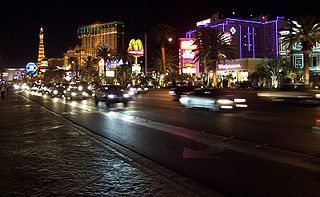Overhauling Transportation in Las Vegas with Electric Vehicles

Having spent more time than I would have liked in Vegas, I can tell you that the overhaul of intra-city transportation that is most needed is trams that would make 10 – 15 stops on The Strip, downtown, and the airport.
The problem, and I do sympathize here, is the loss of jobs for the 9000 cab drivers.
On the whole, the “greening” of our energy and transportation will bring about a large and attractive net increase in jobs. Dr. Robert Pollin, Professor of Economics and Co-Director of the Political Economy Research Institute, University of Massachusetts-Amherst, and consultant to the Energy Department on implementing the Obama Administration’s stimulus program, spoke with me at length on this subject for “Is Renewable Really Doable?” He explained in detail the economics that underlies the migration to clean energy, and it’s extremely compelling.
Here, however, you have 9000 unskilled people displaced, and that’s a problem at both the economic and the political level. If anyone has a win-win solution that works around this issue, I’d love to hear it.

The electric vehicles would achieve a number of things on the energy front. First, these vehicles use the electricity more efficiently, which electricity is produced from more efficiently burnt coal if they use the newer models with incredible efficiencies, above 90%, putting to good use the heat that would have otherwise been lost. Also, the vehicles are lighter, hence need less energy than heavier conventional ones. These two aspects mean less fuel will be required, less pollution will result and there you get two big benefits – cutting carbon footprint and reducing fuel hence dollars.
These benefits may create other employment opportunities, hopefully to absorb some of the 9,000 drivers, who may also serve other customers using these vehicles, either alone or with passengers!
We do some blogging on energy at http://www.energynewz.net/ and also resuming at http://www.phantomsolutions.blogspot.com/ for the East African region.
Visit us and share our views.